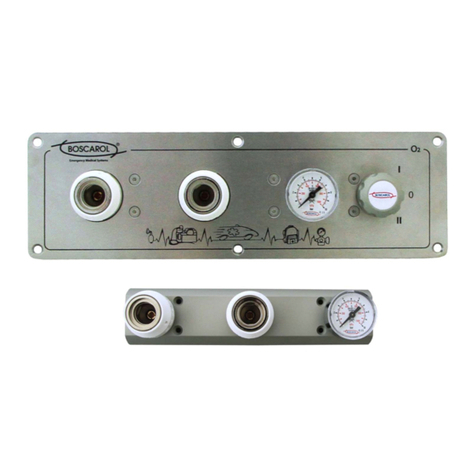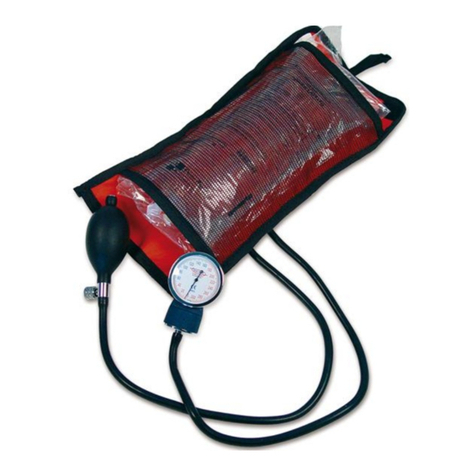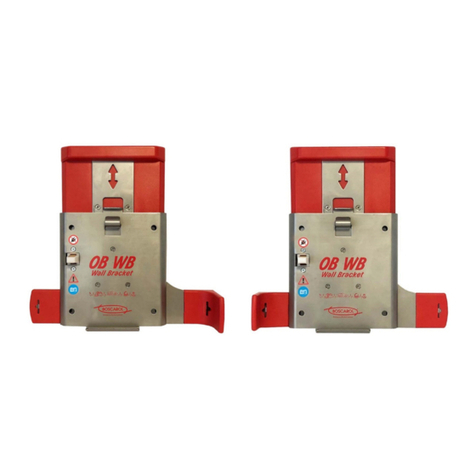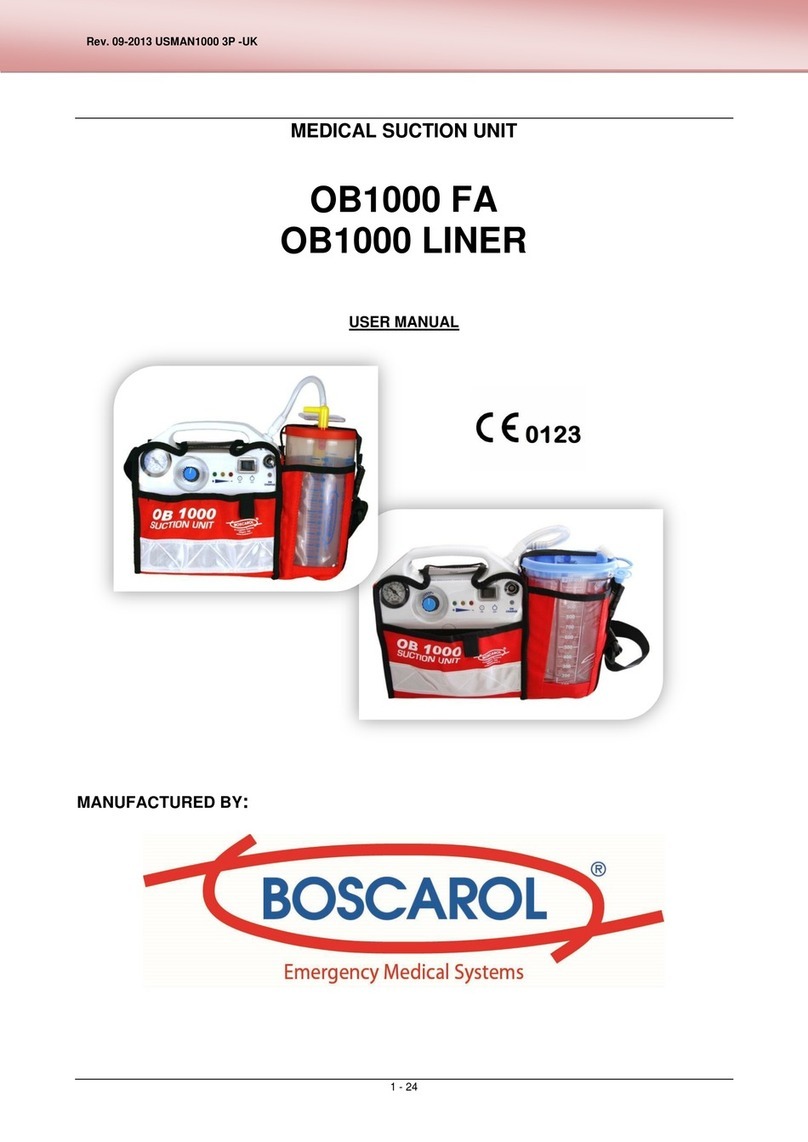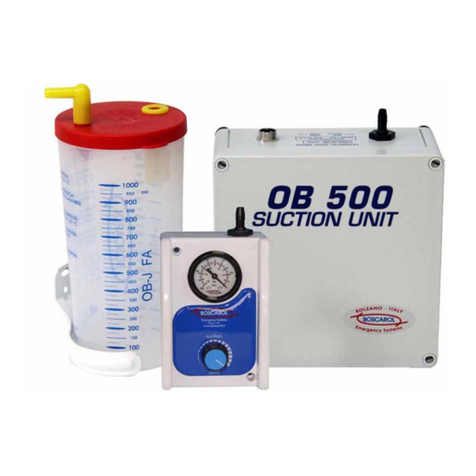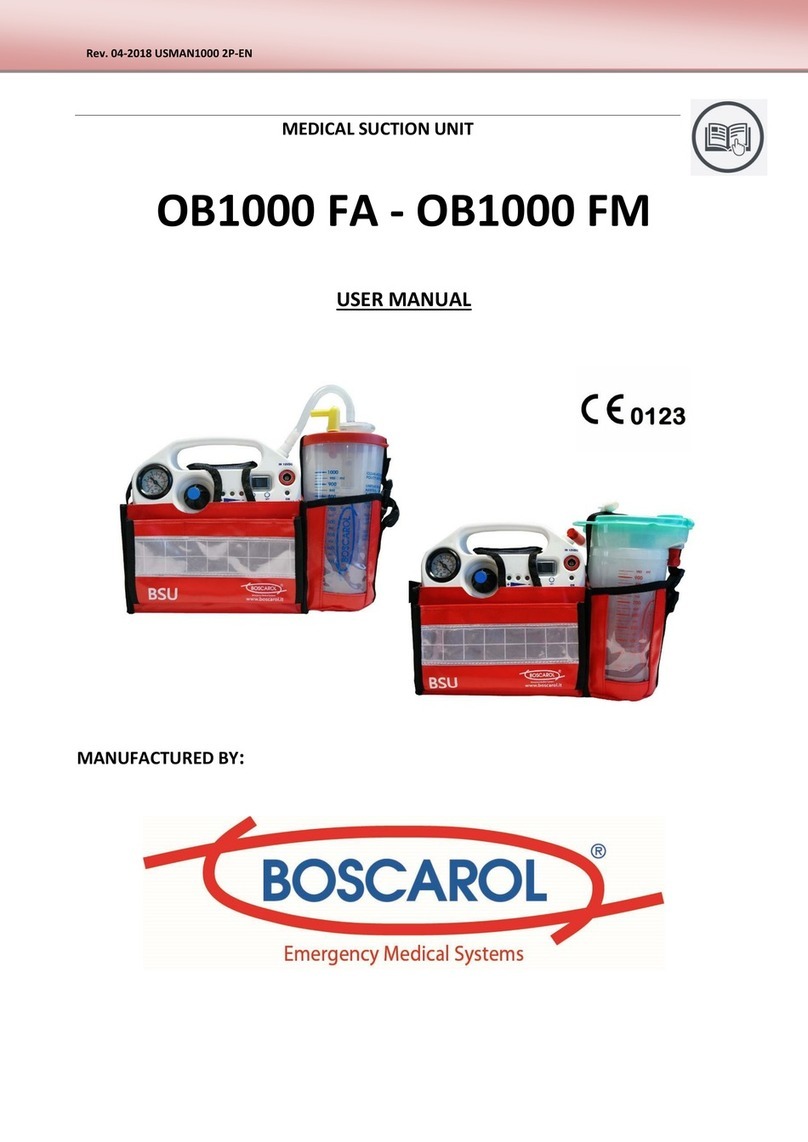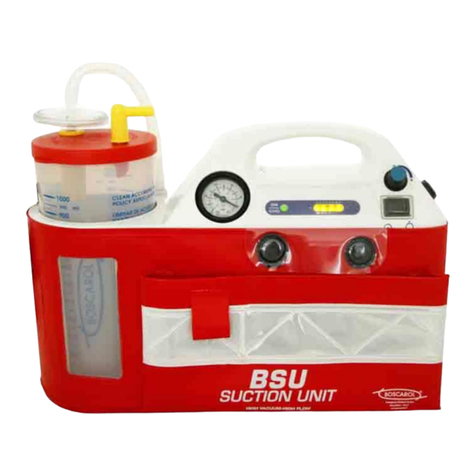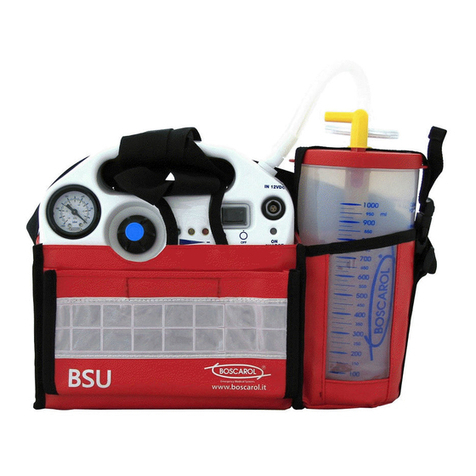In case of possible contamination, discolouration and increased resistance to suction replace the filter.
Warnings and precautions on the use of protection filter
If the suction unit is used on a patient whose medical condition is not known, always replace the filter
after use. This will prevent contamination, even serious contamination, of the operating environment,
operator and patient. If, instead, the patient's medical condition is known and/or there is no danger of
cross contamination, we recommend replacing the filter after each shift or when the filter turns dark.
If the suction unit remains unused, it is advisable to replace the filter once a month. The material used in
its construction could even be damaged by particular environmental conditions (humidity, heat, cold).
Do not use the suction unit without the protection filter or jar!
□OB-J collection jar with SERRES disposable liner
The OB-J jar for SERRES disposable liners (see Fig. 4) is made of a specific transparent plastic. It
includes a canister (1), adaptor for SERRES disposable liners (2), "L" connector (3) and disposable
liner (4). The filter integrated into the liner prevents aspirated fluids from flowing back into the
suction unit when it is completely full.
The jar can be sterilized in a conventional steam autoclave at a maximum temperature of 121 °C and
pressure of 2 bar (200kPa). The disposable liner must be replaced after use on a given patient.
When used in a home environment, the jar can be cleaned using a special cleanser able to guarantee
medical device disinfection. The disposable liner can never be emptied and reused. The liner
containing the aspirated secretions must be disposed of in compliance with medical doctrine, i.e. as
prescribed by the physician according to the patient's medical condition.
□Jankauer suction tube and Finger-typ end-piece
The suction unit is sold complete with a sterile, Yankauer-type suction catheter and tubing for
connection to the jar. The suction tip and catheter are disposable and must be changed after
each use. To facilitate correct operation, the rigid suction tip is angled so it can reach all parts
of the mouth and upper airways.
Upon request, the suction unit can be outfit with a silicone
patient tubing (length: 130 cm) and one sterile Finger-tip joint so that sterile suction tips
of varying size can be connected. The finger-tip joint allows the user to control vacuum
directly with a finger, without requiring any commands. The silicone tubing can be
sterilised while the finger-tip joint is, instead, disposable.
The disposable devices supplied with the medical suction unit bear labels providing all information needed for proper
use.
Warning! Do not use sterile medical devices beyond their expiration date or if the package is damaged.
WARNING ON REUSE OF DISPOSABLE MEDICAL DEVICES
The suction unit comes with some sterile accessories that facilitate patient suction. Such devices are "DISPOSABLE" and
therefore cannot be used on different patients.
The disposable medical devices are made to withstand limited use and cannot be reused. Therefore, once used on a
patient, the operator must properly discard them and reset the suction unit with new accessories. Reuse of such devices
can be dangerous for both patient and operator.
The disposable liner cannot and must not be emptied. The upper cap is arranged so that secretion samples can be
taken for laboratory tests. Each time the filter comes into contact with fluids (of any nature), it is blocked and must be
replaced!


